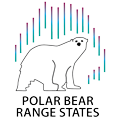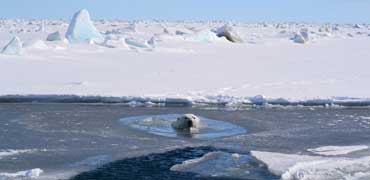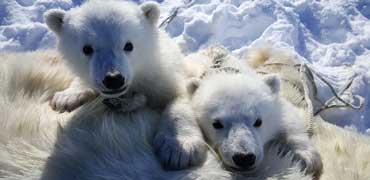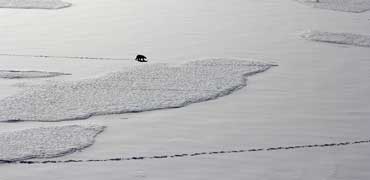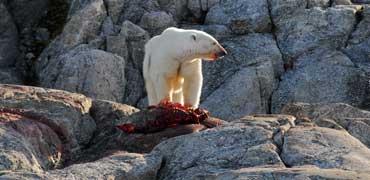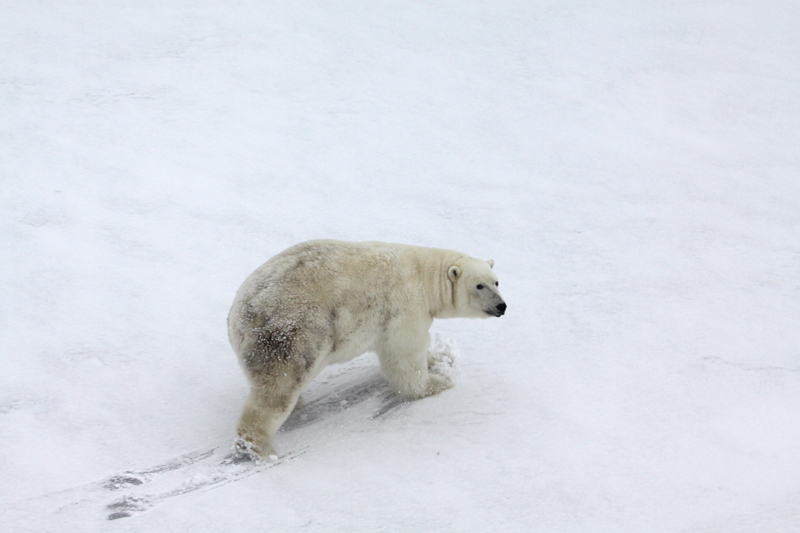 Photo credit: U.S. Fish and Wildlife ServicePolar bears are long-lived animals and, like other bear species, are not generally impacted by disease. Polar bears primarily feed on fat, which is relatively free of parasites; however, larvae of the Trichinella parasite have been confirmed in polar bears throughout their range, and antibodies to the protozoan parasite Toxoplasma gondii have been found in polar bears in Alaska (U.S.), Greenland and Svalbard (Norway). It is not yet clear how the presence of these parasites might influence the health of polar bears.
Photo credit: U.S. Fish and Wildlife ServicePolar bears are long-lived animals and, like other bear species, are not generally impacted by disease. Polar bears primarily feed on fat, which is relatively free of parasites; however, larvae of the Trichinella parasite have been confirmed in polar bears throughout their range, and antibodies to the protozoan parasite Toxoplasma gondii have been found in polar bears in Alaska (U.S.), Greenland and Svalbard (Norway). It is not yet clear how the presence of these parasites might influence the health of polar bears.
Four morbilliviruses (canine distemper, dolphin morbillivirus, phocine distemper and porpoise morbillivirus) have been documented in polar bears from Alaska and Russia. Polar bears in Svalbard (Norway) have been exposed to morbilliviruses and calicivirus, although the nature of these viruses and infections is unknown. One case of rabies in a single polar bear has been confirmed in Canada.
Source: Circumpolar Action Plan
